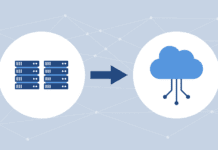Angling for an advantage in a sea of competing storage products, IBM on Tuesday unveiled a new software feature that allows large storage servers to be backed up at global distances at a faster rate than that of a similar product from rival EMC
.
Rich Lechner, vice president of IBM Storage Systems, says IBM Global Mirror for Enterprise Storage provides global backup and recovery protection at distances of more than 300 kilometers with a latency period as low as 3 to 5 seconds — speeds previously possible only over short distances.
This latency period is shorter than that of EMC’s competing Symmetrix Remote Data Facility (SRDF), which typically has a latency of 10 seconds, according to an EMC white paper.
The software, powered by IBM’s peer-to-peer remote copy (PPRC) technology, is also designed to allow massive data transfers while avoiding disruption to IT performance or availability. It requires only two Fibre Channel
While quibbling over lost seconds of network access might seem a bit trivial to some, banks and retail businesses don’t look at downtime as nonchalantly as casual users. That’s because seconds of downtime can cost these types of companies millions of dollars in lost transactions.

IBM Enterprise
Storage Server
Lechner told internetnews.com that customers have requested such a low latency product for a couple of reasons. First, customers have said they need a better protective agent against disasters such as hurricanes or earthquakes. Second, they want to meet stringent record-keeping demands outlined by such regulations as Sarbanes-Oxley and HIPAA.
“Customers are increasingly worried about the durability and security of their data,” Lechner said. “Given all of the new data retention and compliance laws that are out there, no window of data loss is acceptable, so being able to narrow that window down to virtually nothing is incredibly important.”
Clipper Group analyst Mike Kahn agrees reduced latency is significant, noting that customers are more concerned than ever about being able to quickly recover from disaster.
“The ability to move more data is critical because they probably weren’t backing up as much as they needed to,” Kahn told internetnews.com. “So, performance is important — the ability to get data across a minimum distance becomes important. The second thing that’s happening is customers are dealing with a growth of data, so even if they backed up the same kinds of data, they would still have to be able to move more.”
Kahn also reports Global Mirror is being offered with more configuration possibilities for simultaneous remote backup than were previously available.
Global Mirror is the latest software product in an expanding information security and business continuity market that research firm IDC believes will balloon to more than $118 billion by 2007.
The software feature will be available in IBM’s TotalStorage Enterprise Storage Server (aka Shark) product next month. Global Mirror is also part of IBM’s newly announced TotalStorage Resiliency Family, a set of disaster recovery and business continuity offerings from
IBM.
The Resiliency Family includes IBM FlashCopy, for real-time copy during data replication, and synchronous PPRC and Geographically Dispersed Parallel
Sysplex (GDPS), for providing automated data mirroring and workload balancing at multiple sites.
Story courtesy of Internet News.
Back to Enterprise Storage Forum





